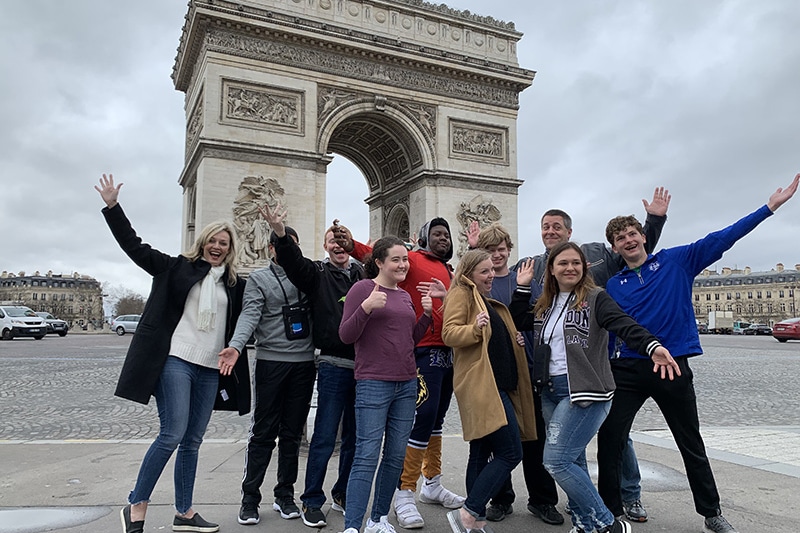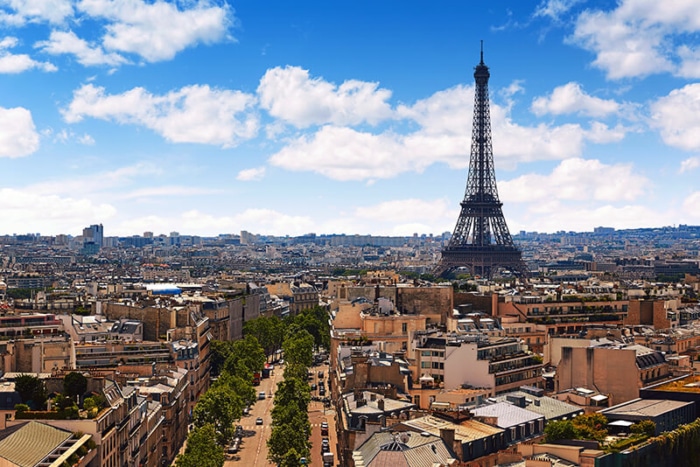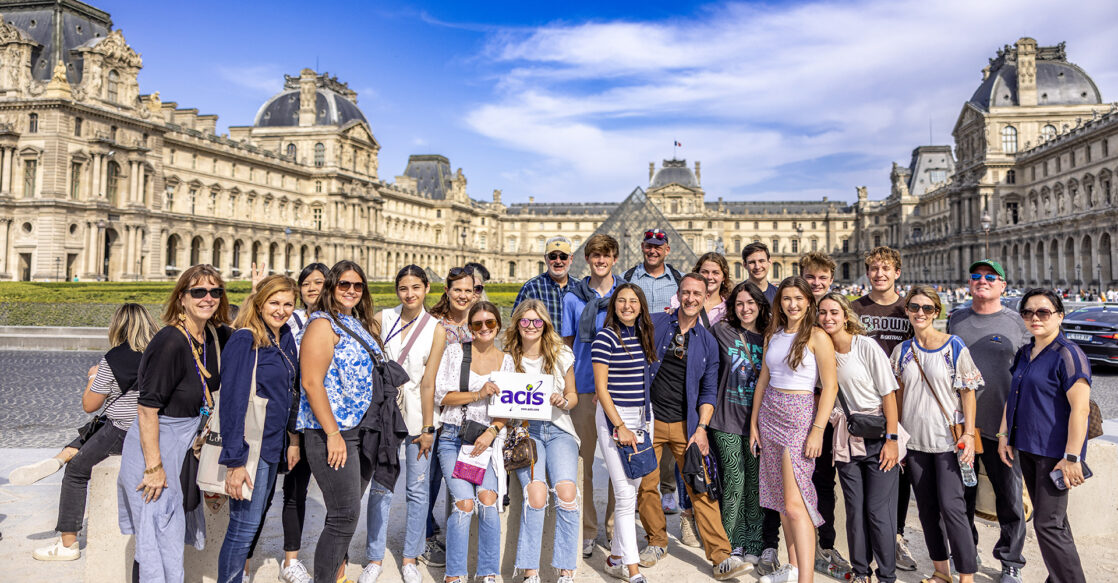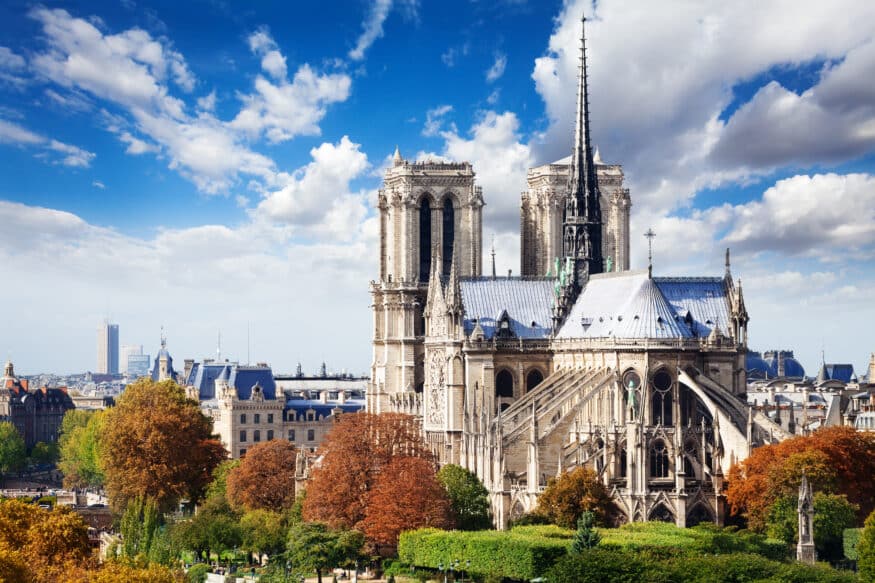Fascinating Facts About 5 Wonders of Paris

Did the 2024 Summer Olympics make you want to visit Paris? We’ve heard it’s always a good idea. Before you travel on your ACIS Educational Tour to France, learn more about the City of Lights with these fascinating Paris facts about five of its landmark attractions.
The Eiffel Tower: More Than Just a Monument
Soaring over the city skyline, the Eiffel tower is now one of the most famous and most beloved monuments on the world stage. But did you know that its current day adoration was not always de mode? The tower was designed by architect Gustav Eiffel, and construction began in 1887 to be completed in time for the 1889 World’s Fair. It took 7,300 tons of iron, 2,500,000 rivets, and 60 tons of paint to complete. The tower’s initial reception was infamously negative: Parisians decried it as an “iron monster” and a group of local artists even tried to put Gustav Eiffel on trial for his creation. Fast forward to the present day and the monument is a beloved symbol of Paris with an average of 7 million visitors per year.

The Louvre: Home to the World’s Most Famous Art
Leading the Eiffel Tower in number of annual visitors, the Louvre Museum is another must-see for those traveling to Paris. The original buildings stood as a 12th century fortress for King Philip I, but by the 14th century it had transformed into a French royal residence. After the revolution in 1789, it reopened as a museum with 537 paintings displayed. The total collection now stands at 380,000 objects and displays 35,000 works of art. Visitors flock to see the famous Winged Victory sculpture and, of course, the most famous resident of the museum, Leonardo DaVinci’s Mona Lisa. According to Louvre guide Marcel Widjaja, if you took 30 seconds at each of the 35,000 works of art, it would take you around 200 days to see them all.

Learn More Paris Art Facts on the ACIS Blog
The Seine River: Lifeblood of Paris
Flowing through the center of Paris and dividing it into two distinct banks, the Seine is as important to the city of Paris as the Eiffel Tower or the Louvre. The Seine river begins in the Burgundy region and stretches northward almost 500 miles before emptying into the English Channel at Normandy. The river has served as a critical trade route for centuries. For the French monarchy, Paris was the seat of power, and the river served as an important mode of transportation. Today, the river is just as crucial to Parisian life. It cuts through the most populated center of Paris, the Île-de-France, a district that has more residents than Austria, Belgium, Finland, Portugal, Norway or Sweden. All along the river, you can find cafes, restaurants, bars and shops, and beautiful museums, such as the Musée D’Orsay. Take time to walk along the shoreline, and you’ll find yourself walking through the storied past and picturesque present all at once.

Notre-Dame Cathedral: A Gothic Masterpiece
Another grand symbol of Paris, Notre Dame Cathedral has a rich history. It was constructed between the 12th and 13th centuries, during the height of the Gothic style, and its many vaulted ceilings, flying buttresses and looming gargoyles are indicative of the period. The cathedral is also famed for the massive Rose Windows, meticulously crafted with stained glass. Through eight centuries of history, Notre Dame has been present for so much incredible Parisian history, from revolution to royalty to renovation. In April 2019, a massive fire broke out, devastating both Paris and the world as much of the cathedral was destroyed. Like a phoenix from the ashes, Notre Dame is expected to reopen in December of 2024, so start your plans to return to this incredible site.

The Arc de Triomphe: Victory in Stone
The Arc de Triomphe stands proudly in the center of one of the world’s most famous roundabouts. It was envisioned by Napoleon in the Roman style as a gateway to the city, taking inspiration from the arches of antiquity, and would be a symbol of glory for the imperial army. It was also in Napoleon’s vision to marry Marie-Louise of Austria beneath the arch, but the construction was barely a few feet from the ground when the wedding arrived. Instead, a scale model was created that they could pass through! In 1836, 30 years after construction had begun, the monument was unveiled with a dedication to Armies of the Revolution and the Empire. Following the devastation of World War I, a monument to the Unknown Soldier was created in the center of the arch. At 6:30 PM each day, there is a ceremony honoring the fallen, and a flame that has been lit since 1923 is rekindled.

An ACIS tour to Paris brings you to all five of these wonders and more! You’ll experience the rich history and culture of the city accompanied by premier Tour Managers who know the arrondissements like the back of the hand. You’ll stay in centrally located hotels, some of which are just steps from famous sites like the Arc de Triomphe, and try local, authentic cuisine in the city’s famed food scene. Allons-y!










